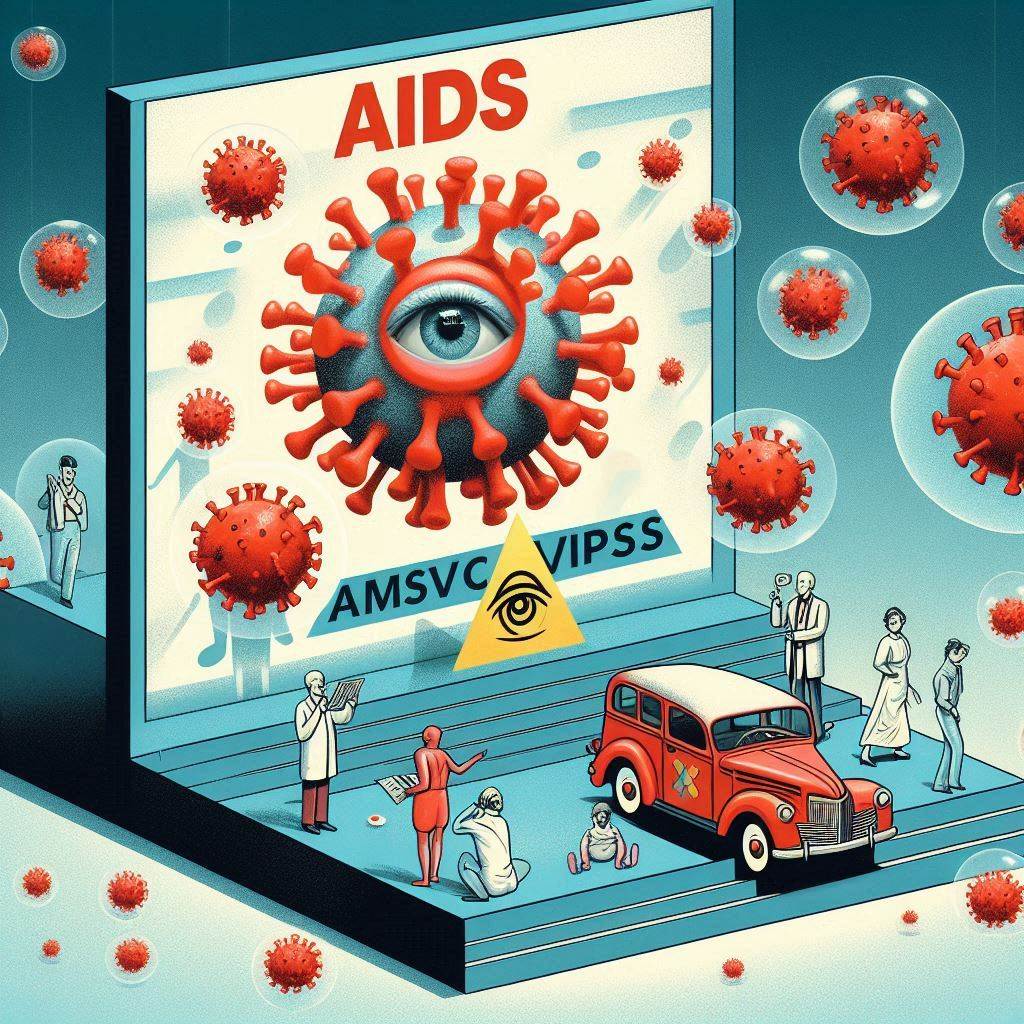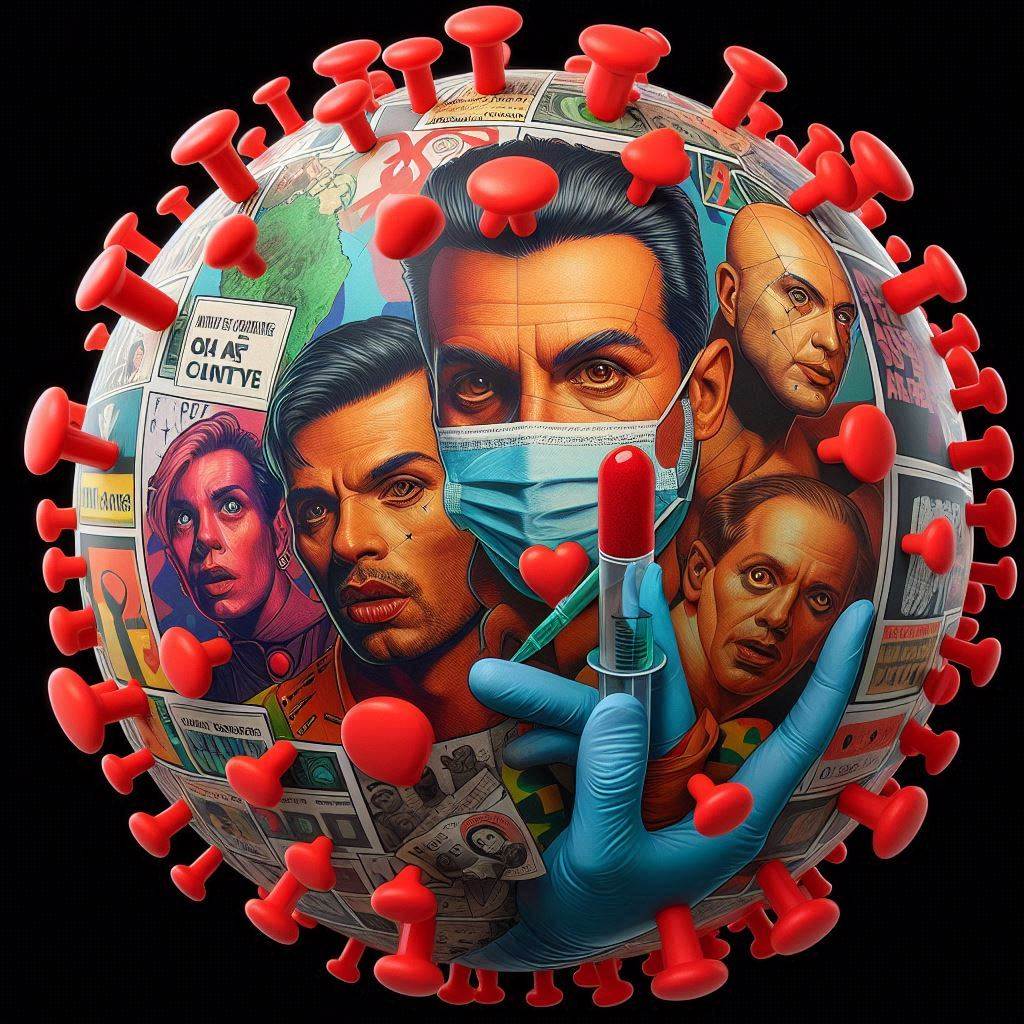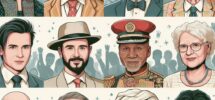When the world was first introduced to AIDS in the early 1980s, it wasn’t just a medical mystery—it was a social earthquake. People asked, often in whispers, “Where did AIDS come from?” But the answers didn’t come solely from scientists or doctors. Pop culture—through films, books, music, and art—played a critical role in shaping how the public understood, feared, and eventually empathized with the HIV/AIDS crisis.

From raw storytelling to global activism, the world of entertainment became both a mirror and a megaphone for one of the most significant health challenges of our time.
Silence, Then Sound: Early Cultural Response
In the initial years of the epidemic, mainstream media and pop culture remained largely silent. AIDS was seen as taboo, associated with death, homosexuality, and drug use—topics many creators hesitated to touch. Still, underground artists and musicians, especially within LGBTQ+ communities, began creating raw, emotionally charged works that broke the silence.
As the question “where did AIDS come from” became more urgent, these early cultural responses served not only to mourn the dead but to call attention to the living.
Films That Educated and Moved the Masses
Perhaps no medium reached the heart of the public like film. In 1993, Philadelphia, starring Tom Hanks and Denzel Washington, became the first major Hollywood movie to directly address AIDS. Hanks played a gay lawyer fired from his job due to his HIV status. The film didn’t just ask where did AIDS come from, but focused on how society treated those affected by it. It shattered misconceptions and forced viewers to face their own prejudices.
Other films, like And the Band Played On (1993), dramatized the early days of the epidemic, showing how delays in understanding where AIDS came from led to thousands of unnecessary deaths. These movies humanized the statistics and gave voice to the forgotten.

Literature: The Written Protest
Books also became powerful tools in the fight against ignorance and stigma. Memoirs like Borrowed Time by Paul Monette and The Normal Heart by Larry Kramer offered deeply personal accounts of love, loss, and rage during the AIDS crisis. These works did more than entertain—they educated, memorialized, and demanded change.
Authors did not shy away from confronting the big questions: Where did AIDS come from? Why did the world ignore it? Who paid the price? These narratives challenged silence with truth and transformed sorrow into activism.
Music: An Anthem of Resistance
While pop stars and musicians were often slow to address AIDS directly in the early days, by the late 1980s and 1990s, music became a rallying cry. One of the most impactful moments was the Freddie Mercury Tribute Concert in 1992. The Queen frontman, who died of AIDS-related illness in 1991, had kept his diagnosis private until just before his death. His passing shocked the world and prompted new discussions around where did AIDS come from and who it could affect.
Artists like Elton John, George Michael, Madonna, and U2 used their platforms to raise awareness, fundraise for research, and celebrate the lives lost. Songs like “The Last Song” (Elton John) and “Streets of Philadelphia” (Bruce Springsteen) resonated globally, offering solace and solidarity.
Visual Art and Fashion: Creativity Meets Activism
The AIDS Memorial Quilt, started in 1987, became one of the most iconic visual representations of the epidemic. Each panel commemorated a life lost, turning grief into a patchwork of love and activism. Meanwhile, designers and fashion icons like Keith Haring and Jean-Paul Gaultier used their art to raise awareness and challenge stigma.
Red ribbons, introduced in 1991 by Visual AIDS, became a global symbol of AIDS awareness—seen on runways, award shows, and political stages.
Pop Culture’s Lasting Legacy in the AIDS Fight
Today, pop culture continues to shape the global narrative of AIDS. Shows like Pose and It’s a Sin revisit the AIDS crisis with a new lens—blending drama with historical truth and helping new generations understand not only where did AIDS come from, but how society reacted and who suffered the most.
Pop culture didn’t just reflect public opinion—it challenged it. It turned whispers into shouts, fear into empathy, and loss into purpose.
When the medical world struggled to find a cure and the political world hesitated to act, pop culture stepped in to ask the hard questions. Through songs, films, books, and visual art, it helped the world reckon with the epidemic—not just medically, but emotionally and socially.
In the broader search for answers to where did AIDS come from, pop culture offered something science could not: a human face to the virus. And in doing so, it turned art into activism—and entertainment into enlightenment.


